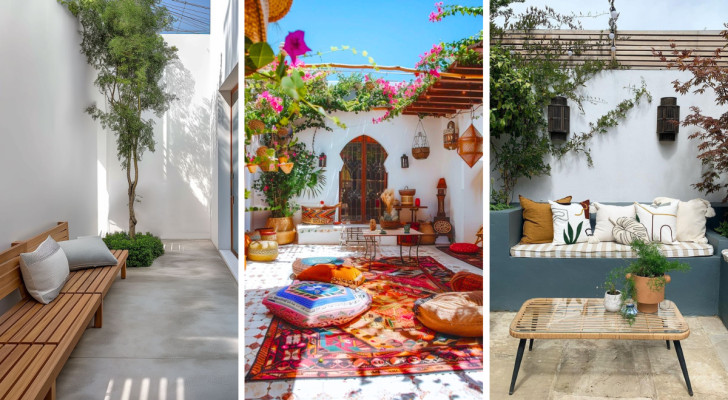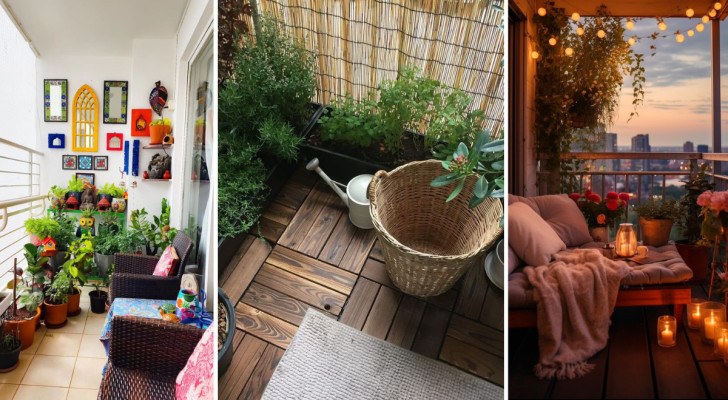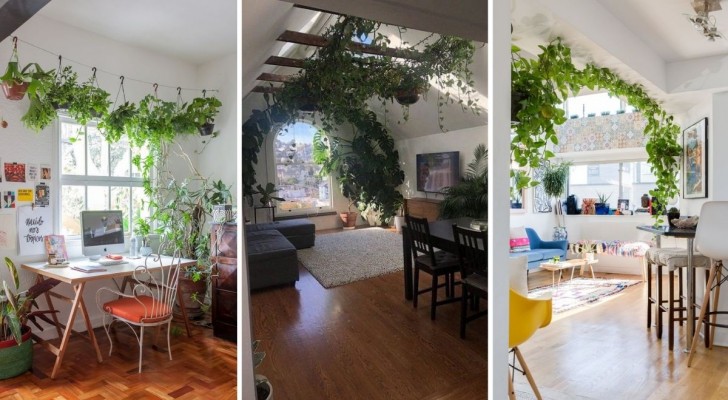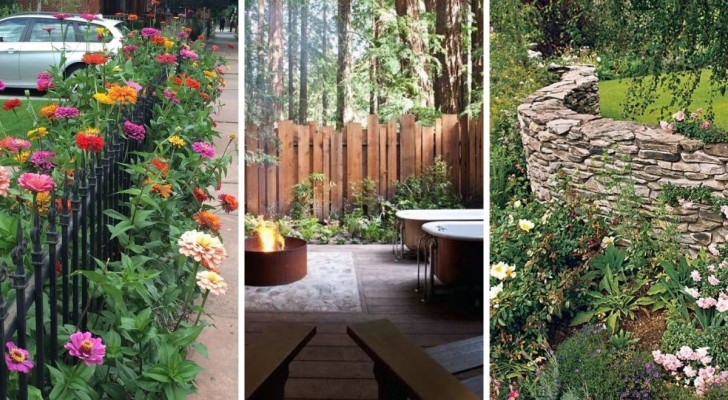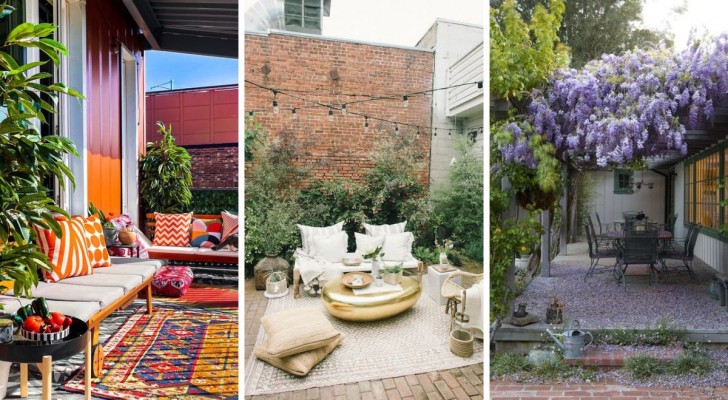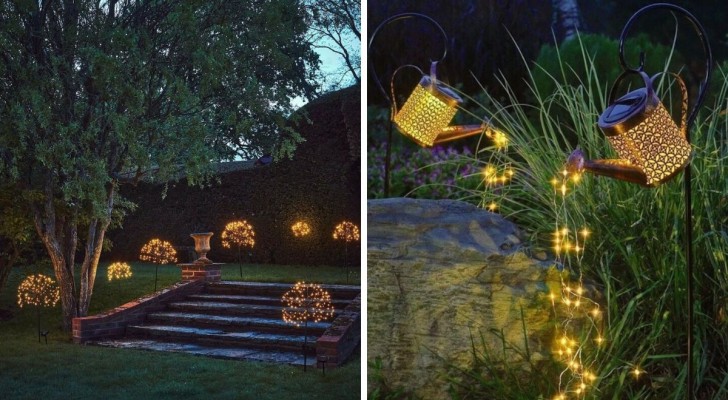Biophilic interior design: this futuristic trend aims to bring nature into the home
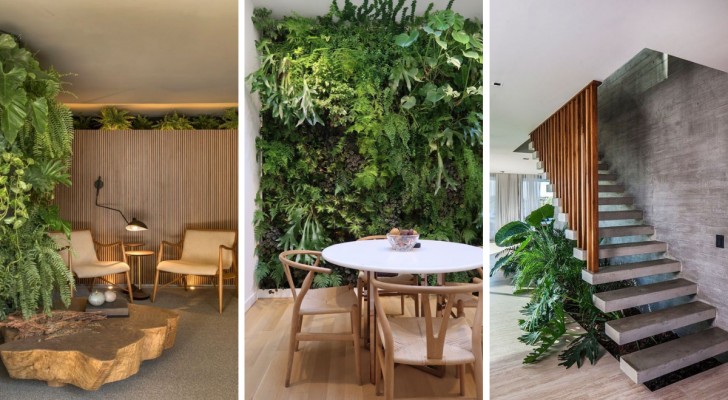
"Biophilia" is a term we are hearing more and more of in terms of interior design and gardening... But what does this word mean? "Biophilia" is a word that comes from the Greek and means "love of life". In terms of interior design, it signifies welcoming nature into our lives through the design of our living environments.
It's not just a case of having lots of pots of plants around, but ensuring that there is a true symbiosis with nature, entering our homes in different ways. Examples include public architecture or large buildings which have gardens and green spaces "built into" them - and this design approach can be replicated in regular homes.
Biophilic design at home
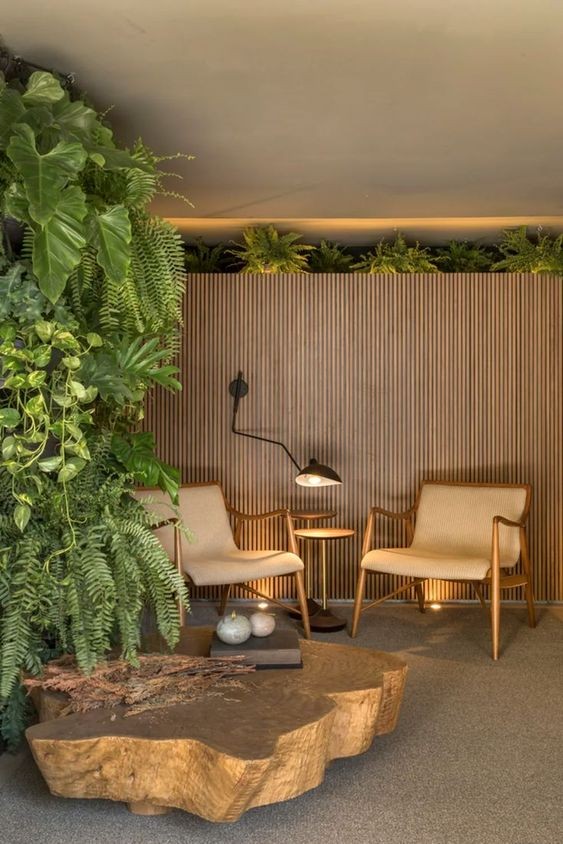
Creating a biophilic atmosphere at home means being able to remodel your living spaces: if you want plants that are healthy, they will need access to light and water in the necessary amounts.
This is why the most breathtaking examples of biophilic design are those set up in very large, bright environments, with glass walls or roofs and/or skylights.
Indoor/outdoor fusion
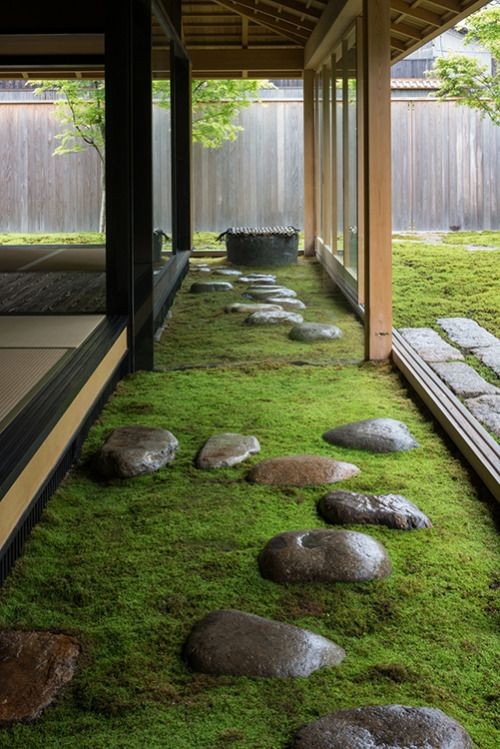
One of the key concepts of biophilia is creating a fusion between indoor and outdoor spaces. An ideal house for this is one surrounded by greenery - like the one shown here. This is an example of a building in Japan, with a moss lawn that extends into the house, through a corridor which is only nominally separated from the outside (Matabe, Naoshima, Kagawa - 2015, by Hiroshi Sambuichi).
Vertical gardens as a green oasis in urban areas
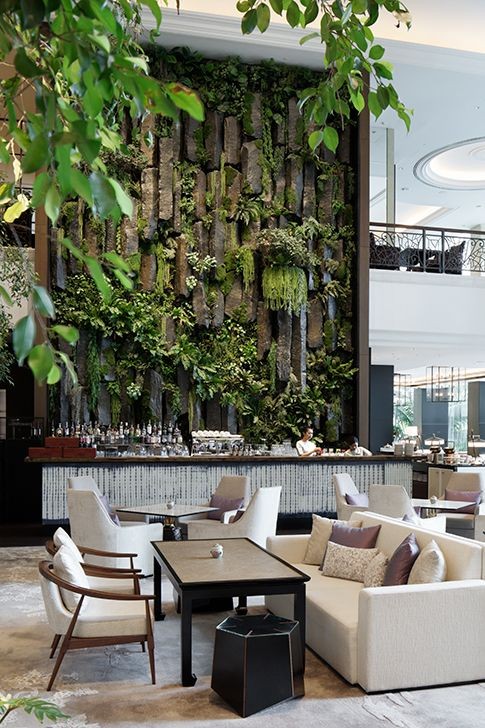
Where space is limited, however, special layouts for plants, such as vertical gardens (aka "living walls"), is a way to overcome this restriction. Vertical gardens like this first appeared in hospitality facilities (in this photo, you can see the lobby of the Shangri-La hotel in Singapore).

Over time, this vertical garden trend has become popular in regular homes. Again, it is important that you choose a sopt in your home for this greenery that has sufficient light and where it is possible to guarantee a good water supply.
There are many interior design studios all around the world that specialize in setting up these gardens. In addition, there is no shortage of tutorials online about how to undertake a project like this yourself.
Where to place plants in the house?
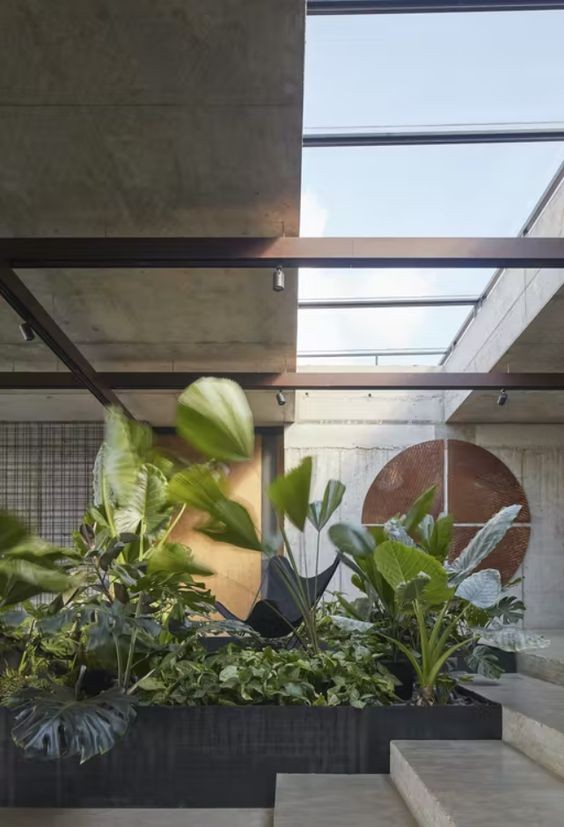
If you have room close to windows or glass doors (or some other light source, like skylights), these spots can be used. For example, you could consider setting up a raised flowerbed in one of these locations - provided you can also guarentee good water flow and proper drainage. Remember that stagnating water is bad for plants and for your health too.
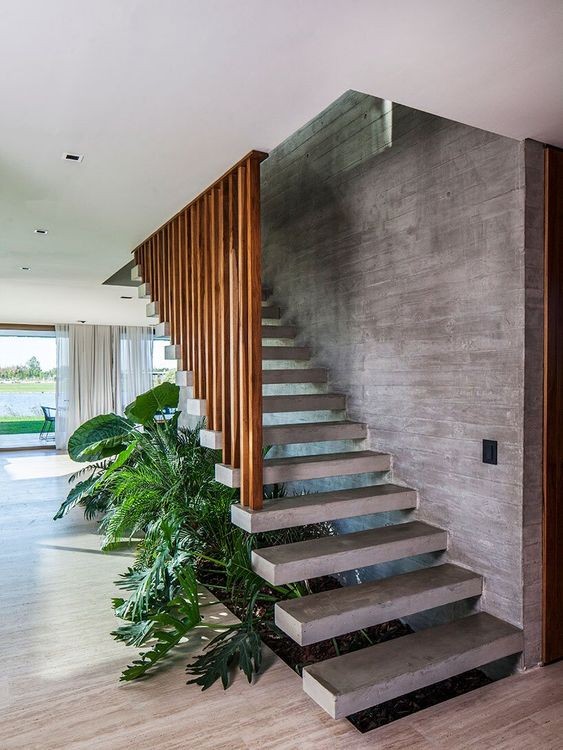
Interior design experts know that the space under the stairs is often neglected. But given the right conditions, this spot can become the ideal setting for a mini garden in the home.
Biophilic design in the various rooms of the house
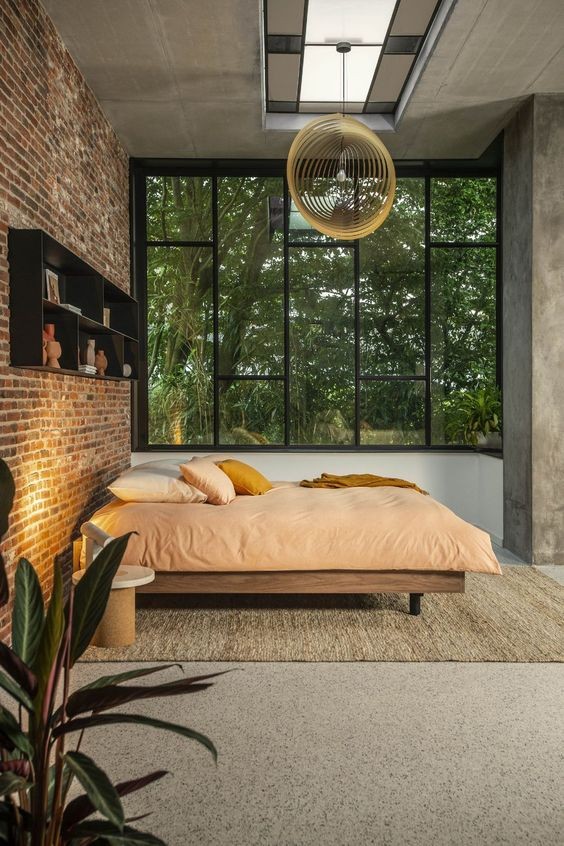
And what about the other rooms in the house? Each of these can also become "one with nature".
You can easily bring greenery into your home when you are surrounded by it (as was shown above in the inside/outside transition space example). But just by opening windows and glass doors onto a natural setting, has a similar effect - and is especially suited to a bedroom, as shown here.
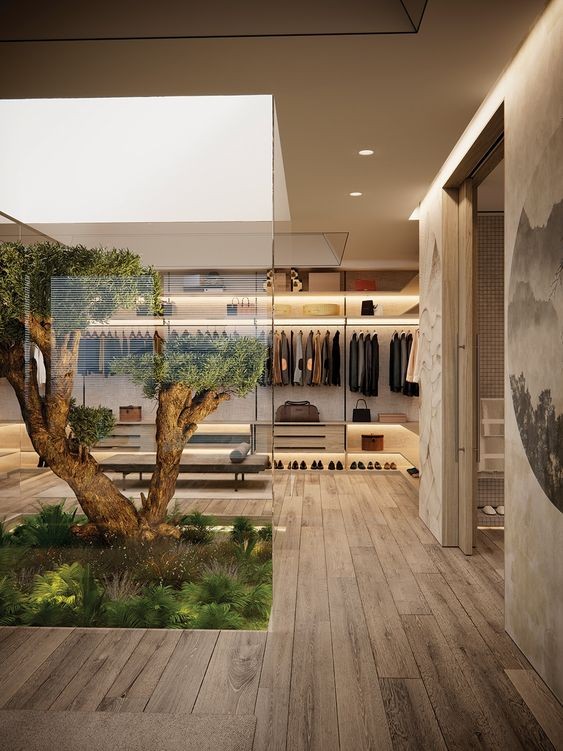
It's great to look at the projects done by interior designers around the world who have been able to create green oases in hotels, restaurants, offices and more. Check out this wonderful example: this is the Olive Suite by uDesign - a 75-year-old olive tree divides the bed area from the closet which is surrounded by glass - including the roof. A section of the glass roof can be opened so, when it rains, it also rains on (just) the tree.
Biophilic kitchen
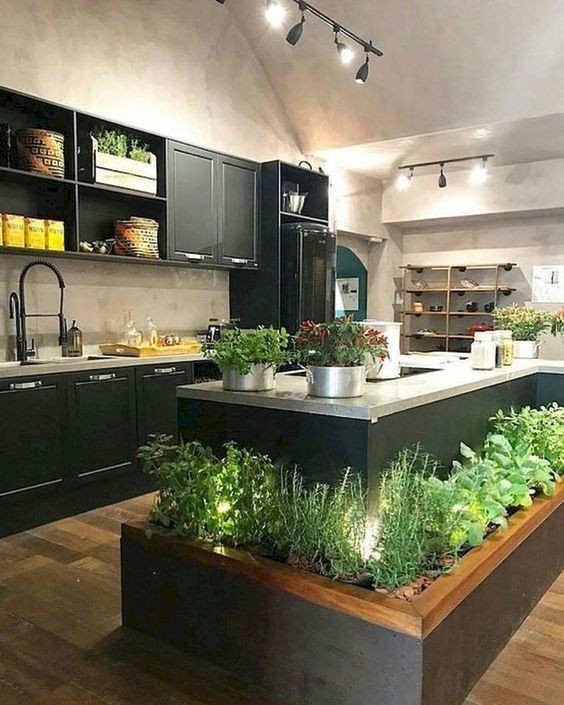
In the kitchen, obviously a "kingdom" of aromatic herbs and edible plants would be perfect for this interior design concept. Wouldn't it be great to have all this wonderful green produce to hand as you work in the kitchen?
Jungle in the bathroom
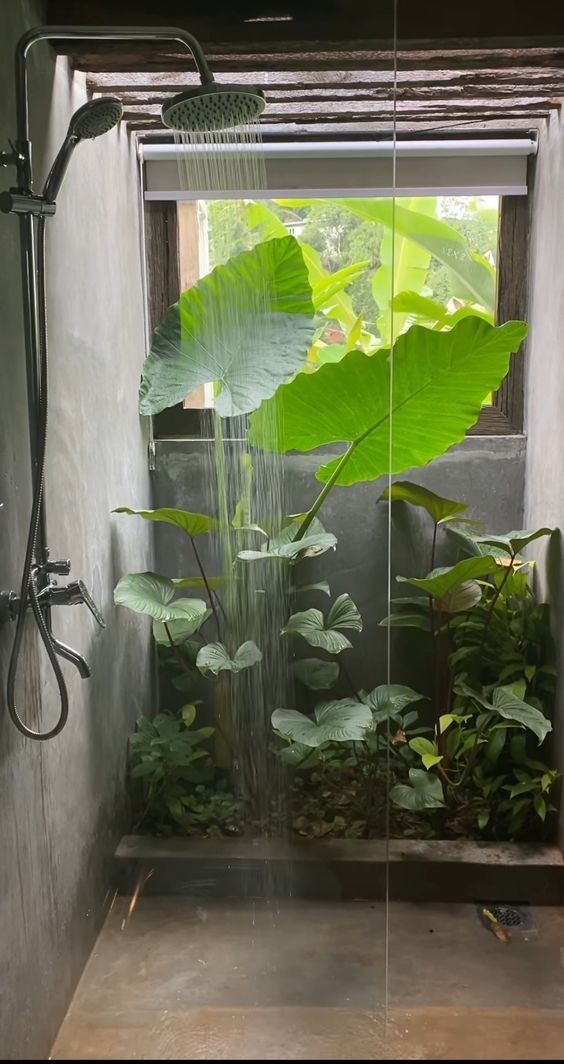
Walk-in showers with an area dedicated to plants: this setup is becoming more and more popular in homes and bathrooms these days. You can use hanging, climbing plants or make room for potted plants on the floor.
Would you like to live in a home that embraces the biophilia design philosophy?
